“It may have been a rough road, but the build of Peter and Taryn Kelly’s left-hook 280Z is now complete, although this car’s story is only just beginning ”
It was built by past NZ Performance Car magazine editor Peter Kelly and his wife Taryn, so it shouldn’t come as a surprise that this Datsun 280Z isn’t new to the pages of NZPC, or to myself. If you’ve picked up the magazine over the past few years you will have seen Pedey and Taryn’s frustrating two-year struggle as they wrestled with the build each and every step of the way. But as anyone who has pieced together a ground-up project will attest, you kind of get lost in the build, and nothing else matters but getting it done — not the empty wallet, skinned knuckles, or that damn part that just won’t fit.
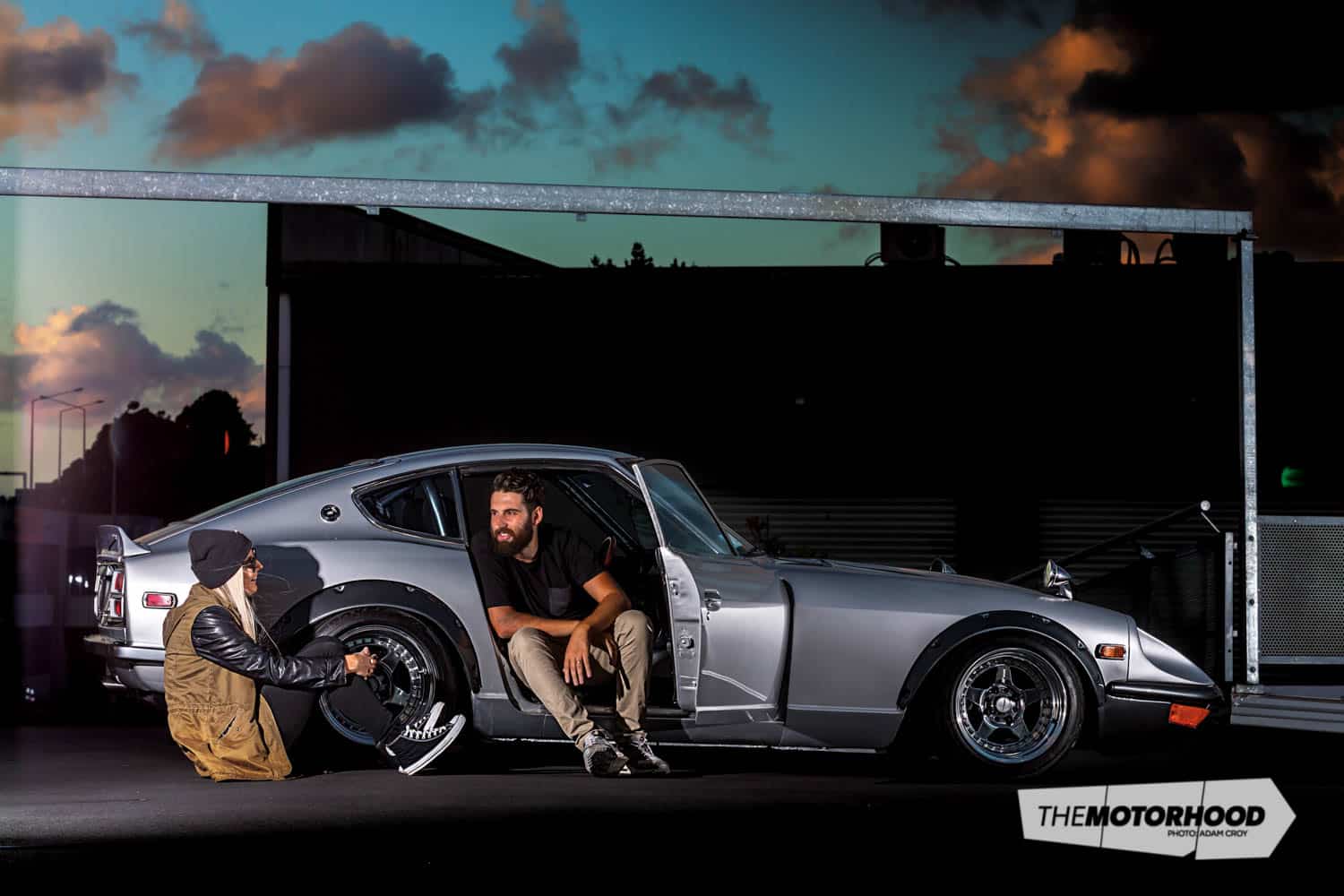
The couple’s S30 dream was initially sparked by Taryn, who fell in love with the chassis when California-based Yuta Akaishi dropped his ground-scraping example on Speedhunters, circa 2009. This was further cemented when the pair ventured to Tsukuba Circuit in Japan a few years later for the Idler Games, as Pedey explained.
“There was a stripped-out Fairlady Z period-correct race car, the sound of the L28, running triple side draughts, blasting past on track was amazing — we had to have one. Some months later, when we were back home, Taryn found one on Trade Me. We didn’t have any money to purchase it, so we both visited our bank managers.”
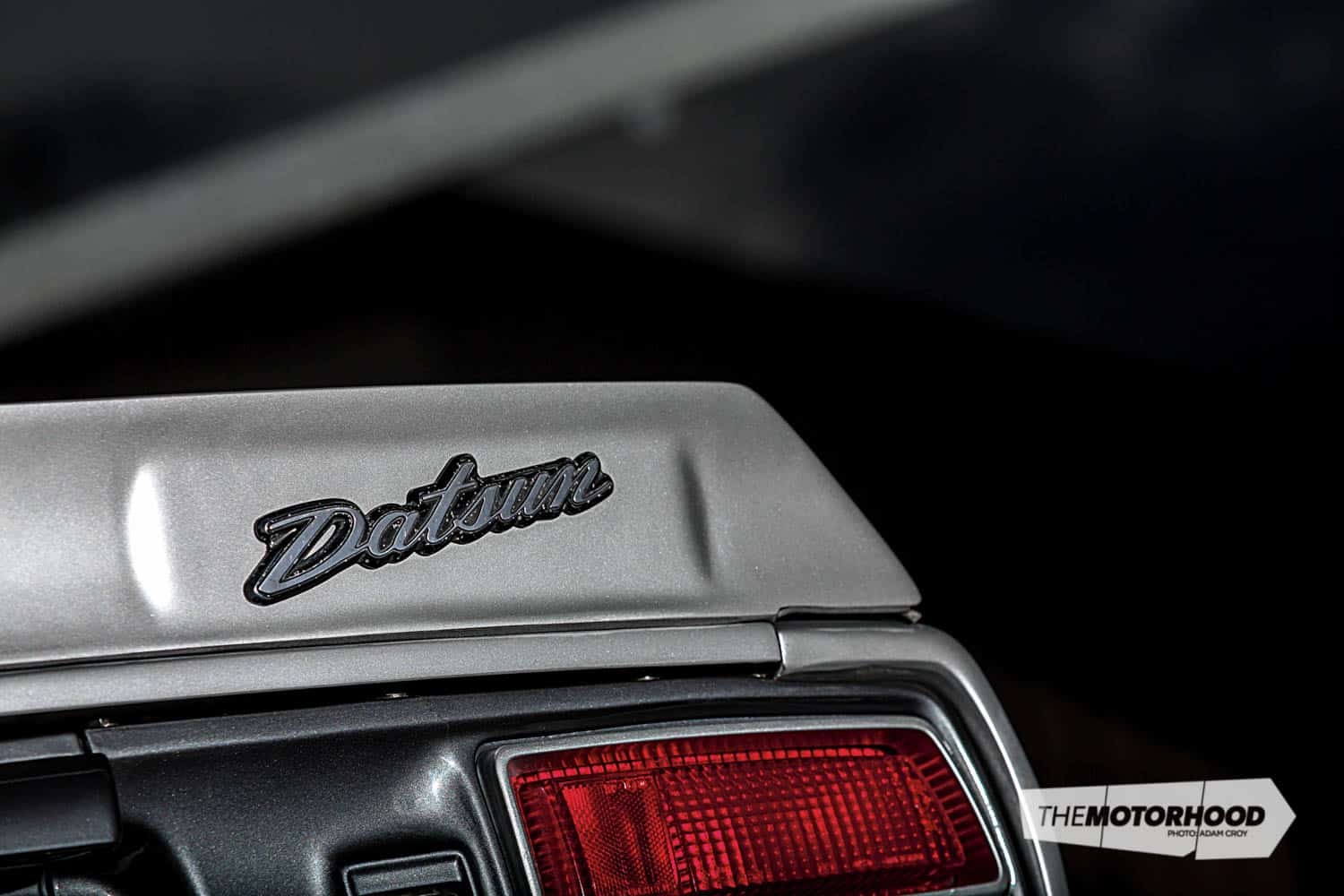
The car they had fallen in love with was a left-hook USDM Datsun 280Z that had found its way to New Zealand back in 1976. It came into the country with an American air force officer who was part of the US’s ‘Operation Deep Freeze’ in Antarctica. The air force allows certain personnel, who are based in Christchurch, to bring their own personal cars with them from the States under special permit. Apparently the Zed had a built L28, and had been resprayed a few years earlier. But as the pair was about to find out, no old car is quite as it seems, and when day one saw it put on the dyno at STM for a health check, it was making only 74.5kW (100hp) at the rear wheels. Something was definitely wrong with the supposedly high-compression engine, but the true extent of the issue would not be revealed for another year.
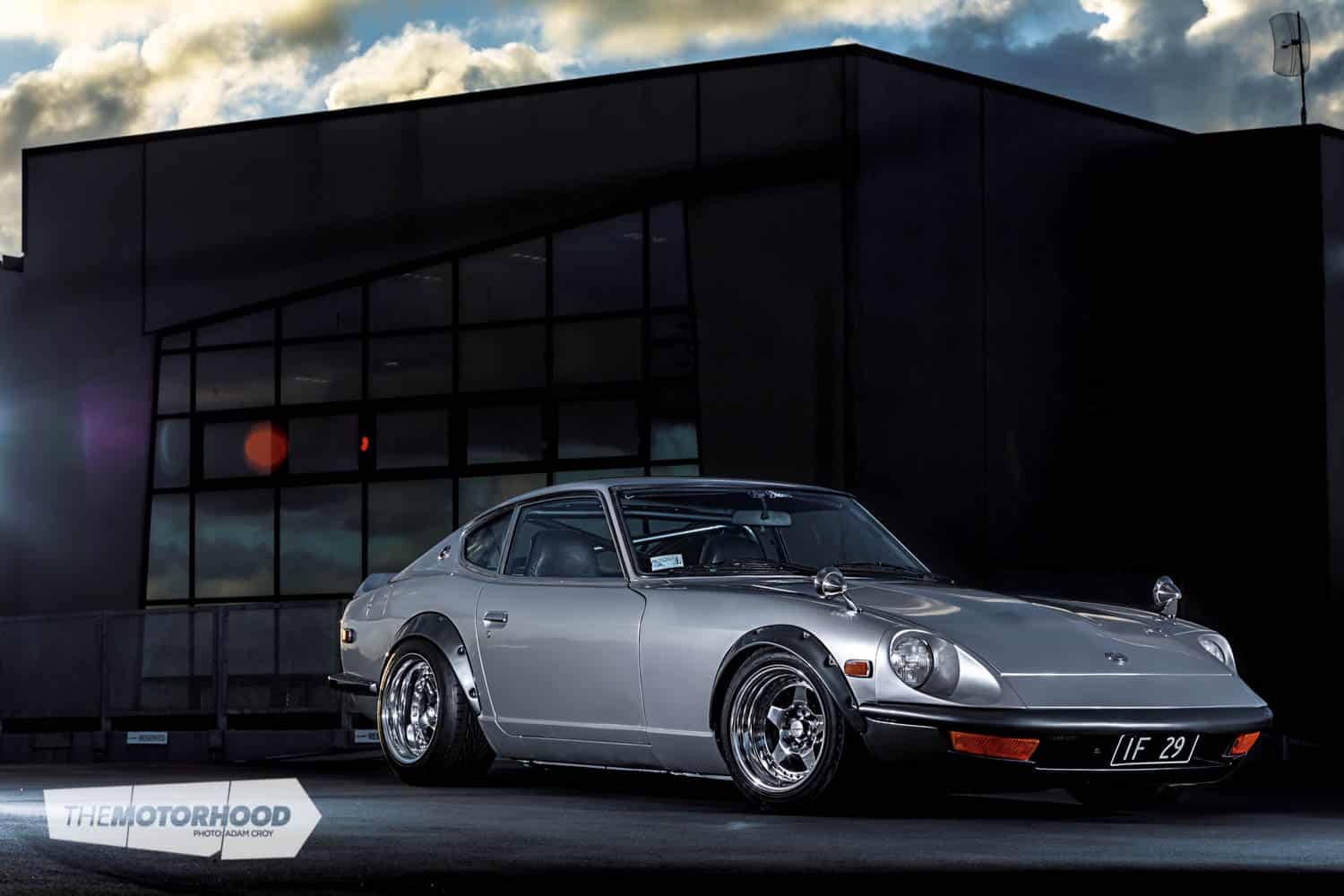
From the beginning, the pair had a solid vision of exactly what they wanted for the Datsun. It was to be a street car, and they planned to accentuate the S30’s vintage elegant-yet-aggressive body shape. To do this, a ZG-conversion kit — based on the special-model JDM-only Fairlady ZG — was purchased in Australia, and the ever-frugal Pedey put Taryn on a plane to Melbourne, so she could bring it back as luggage as it was cheaper (and safer) than having the kit shipped.
“It’s a love-hate thing, some people hate it, but I think it transforms the shape, it’s way more ’60s supercar,” Taryn says.
The elongated G-nose really does balance out the front end, providing a certain elegance that balances out the aggressive ducktail wing and fender flares. GT Refinishers reluctantly took on the job of wrestling the out-of-shape fibreglass into submission; smoothing, shortening and fitting a 240Z rear bumper, fitting genuine ZG mirrors that Taryn had sourced from Japan, as well as removing rust from a few places including the chassis rails, both doors, the floors, and a few other spots. Pedey is quick to point out that there’s no such thing as a rust-free S30.
“If you think it’s rust-free, you’re probably wrong, and you just haven’t found it yet.”
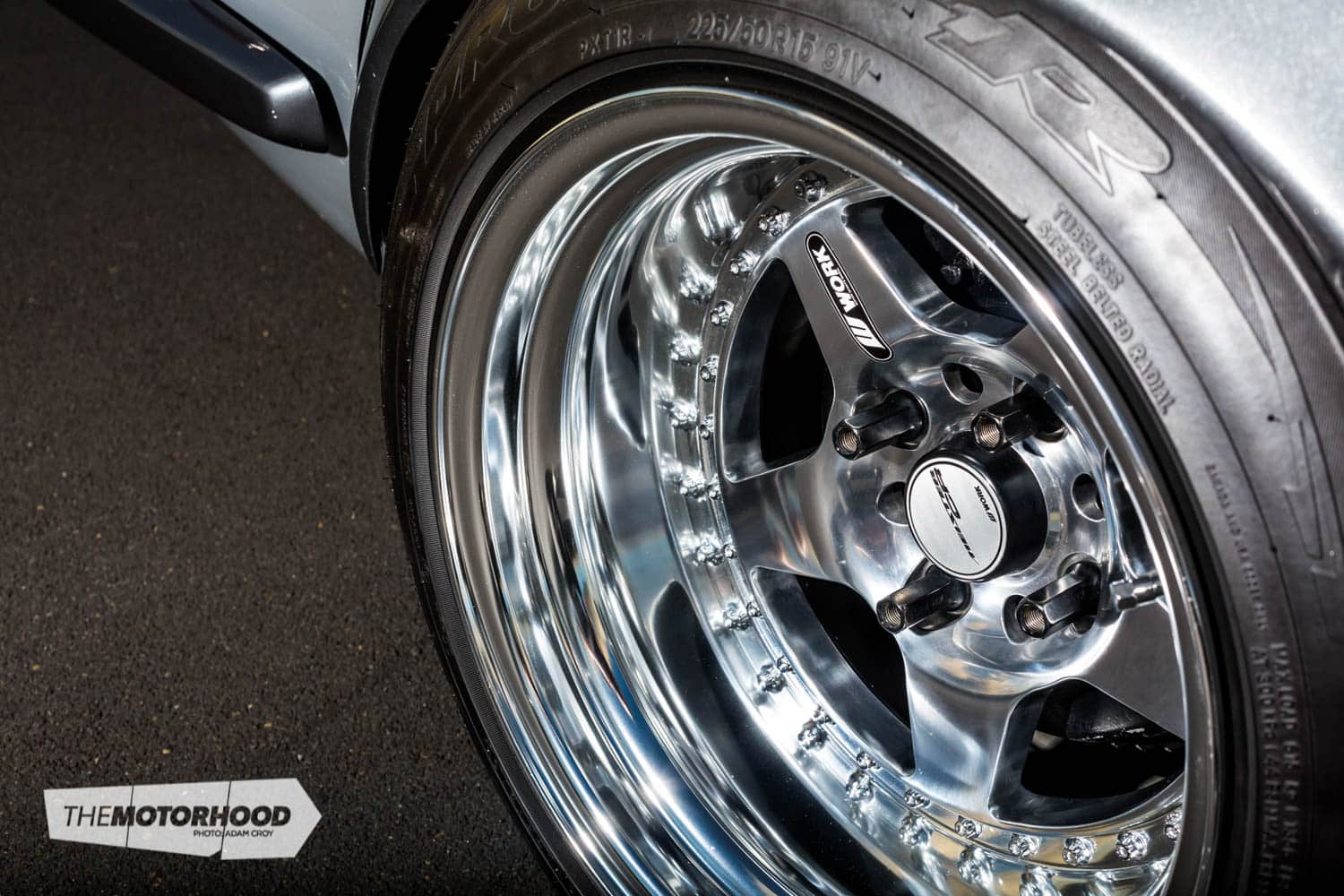
One of the most frustrating jobs of the entire build was getting the suspension right. No, scratch that, getting the car low enough to scrape road markings clean off.
“There is no such thing as bolt-in coilovers for these cars, you can purchase a kit but you still need to cut and weld the front struts. In retrospect we should have purchased a Ground Control kit, as there would have been less screwing around. We repeatedly re-chopped and re-welded using different shocks to get it low enough.”
All that trial and error unfortunately meant that they didn’t commit to buying quality (expensive) gear for fear it would be wrong and need to be replaced.
“We purchased the cheaper stuff, the springs are way too stiff so the shock is overpowered. But now it’s set up at the height we want it, we’re going to go to a slightly softer spring, and decent Koni adjustable shocks with the correct valving.”
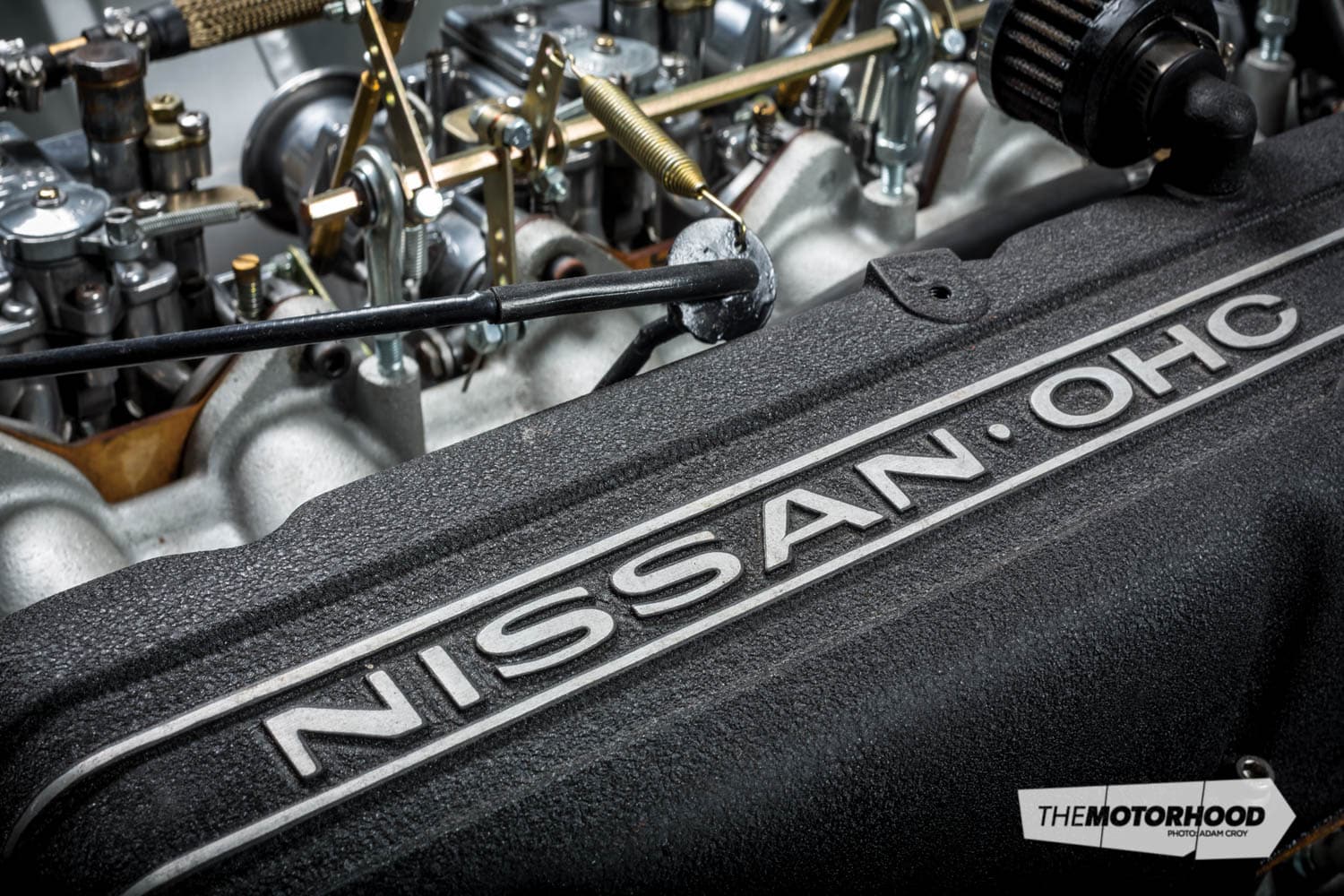
With the looks on point it was time to shift focus to the engine power, or should we say lack of. To start, a set of factory 240Z twin SU carbs were thrown on, as it was thought the archaic factory Bosch EFI system (the USDM 280Z was the first Z to be fuel injected) might be the issue causing the underwhelming dyno figure.
But when a compression test revealed number five cylinder was down on power, things started to snowball — a word commonly used at NZPC. With the help of a few mates the motor was pulled down, and the pair started exploring other engine options, versus the cost of rebuilding the L series.
“It probably would have have been cheaper in the end if we’d put an RB in, but it just didn’t seem right. You have to match the car’s looks to the sound I think, and in the end we decided to keep it period correct with a high-compression rebuild and triple carbs, even though it was going to cost more,” Taryn says.
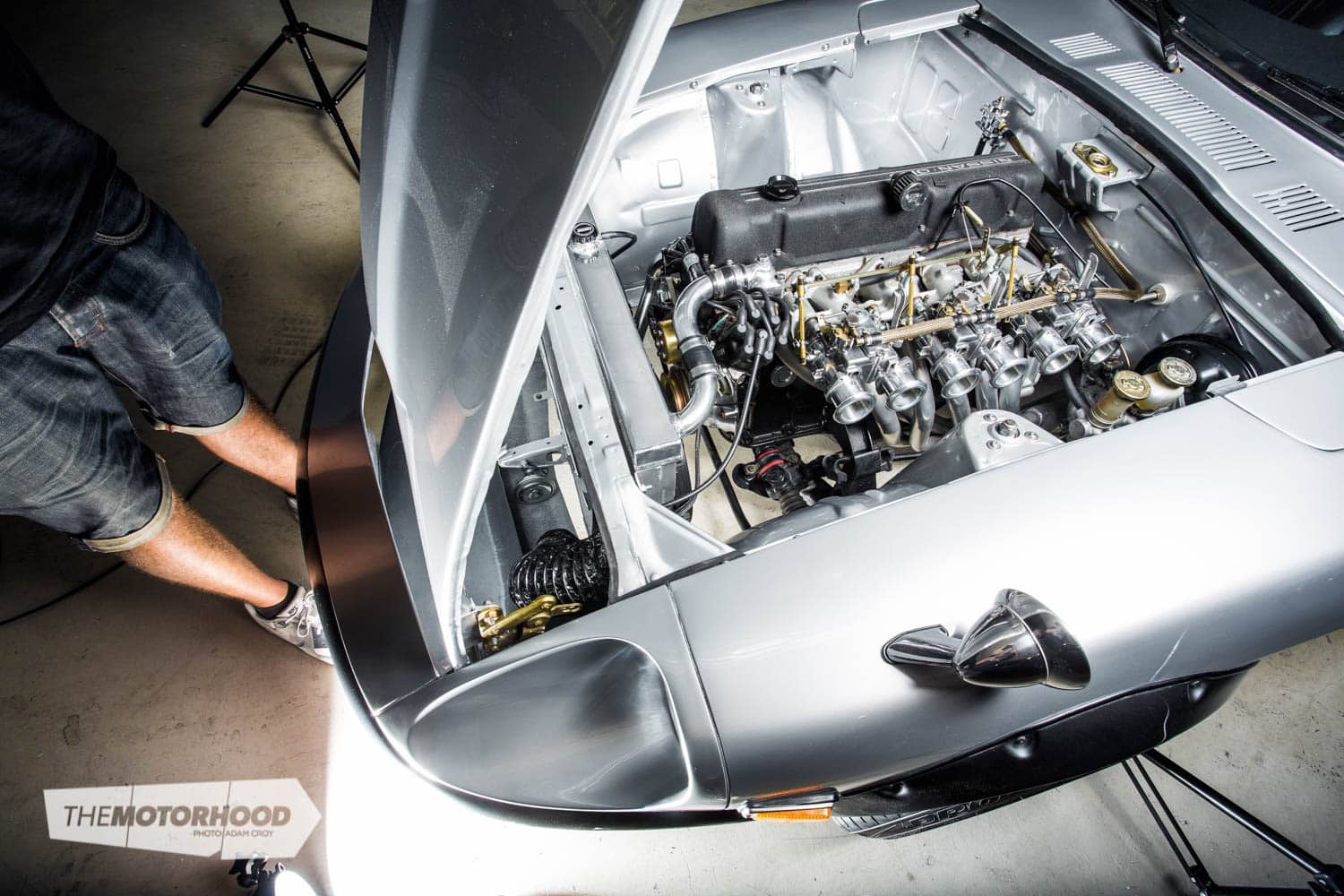
The silver lining to the engine build was finding out the head had received extensive work at some stage, including port reshaping and a big port and polish. While the engine work was ongoing, I had to open my mouth and suggest to the pair that we shave the engine bay of all and any unwanted brackets. So joining the long list of mates who made the build possible, I helped them strip, shave, weld up, and smooth out the engine bay ready for a matching coat to the exterior silver from GT Refinishers.
But there was still a long way to go until happy motoring, and the next hurdle involved a new set of hand-built headers and completely rebuilding and setting up the triple 40mm Mikuni/Solex carbs, which they had found cheap online. Pedey explains; “Some friends and I tried to set them up by ear, but that was a nightmare. So we took the car to Bob Homewood at HiTech Motorsport. The carbs needed a serious overhaul, but luckily we were able to import everything new from Wolf Creek Racing in the USA. I’m glad we took it to Bob and spent the money on a proper rebuild and dyno tune, because if they are not set up right the first time, it will always be unreliable and you will spend your entire life chasing it.”
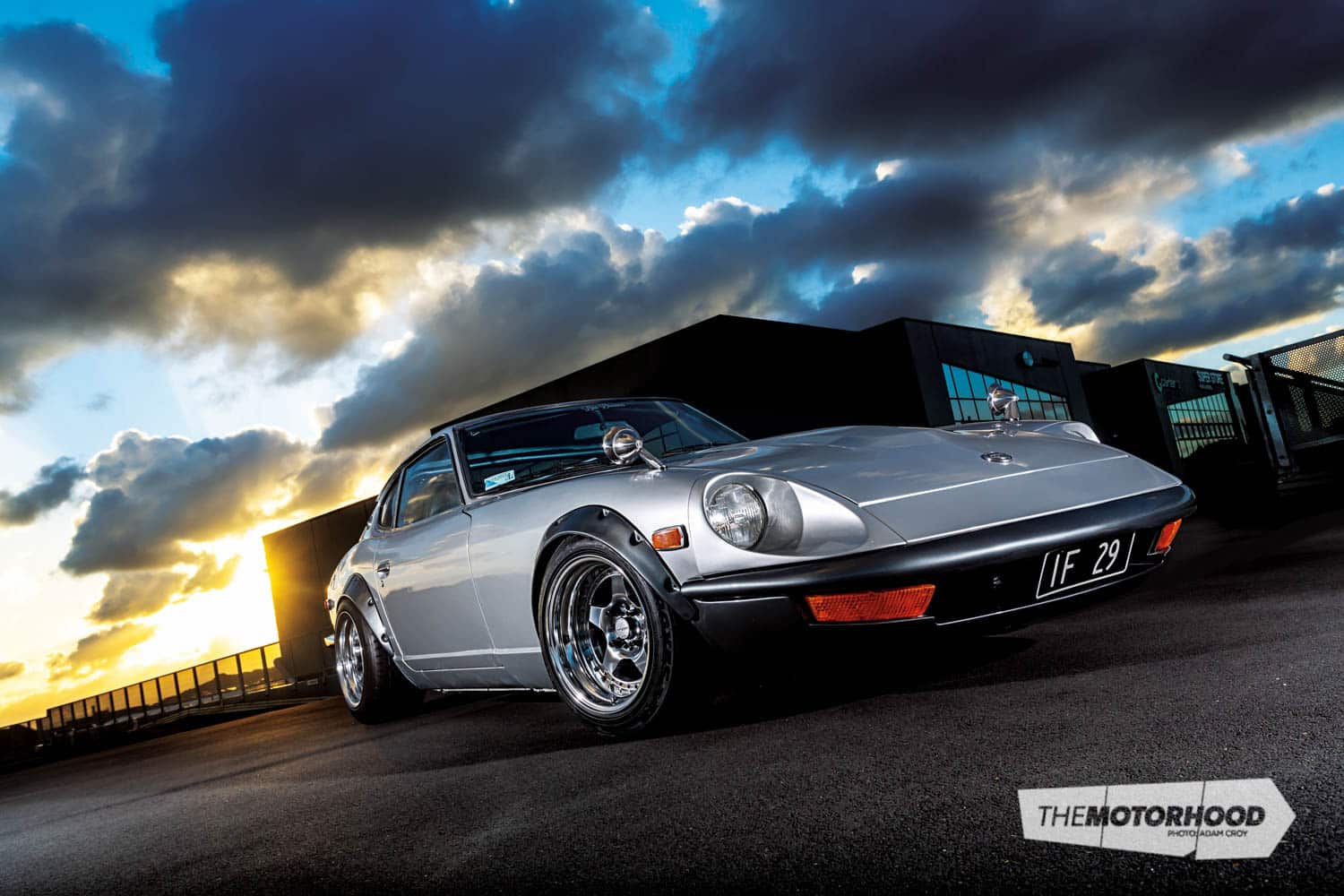
It had been two years of intense frustration, but finally the car was complete, and making nearly double the power with 134kW (180hp) to the rear wheels — just in time for Pedey and Taryn to move overseas, and have to park it up for 12 months.
But on their return to New Zealand they got some serious seat time ahead of leaving the country again indefinitely. But this does not mean they will part with the Datsun. This car is as much a part of them as they are a part of it, so it’s likely the S30 will be part of the Kelly family for sometime yet.
“We were so precious about it being perfect and forgot that it’s a sports car built to thrash, we have raised it up, fitted a rev limiter and now we’re getting stone chips and all sorts and we couldn’t be happier. It’s surprisingly quick and torquey, it goes hard for what it is.”
View fullsize
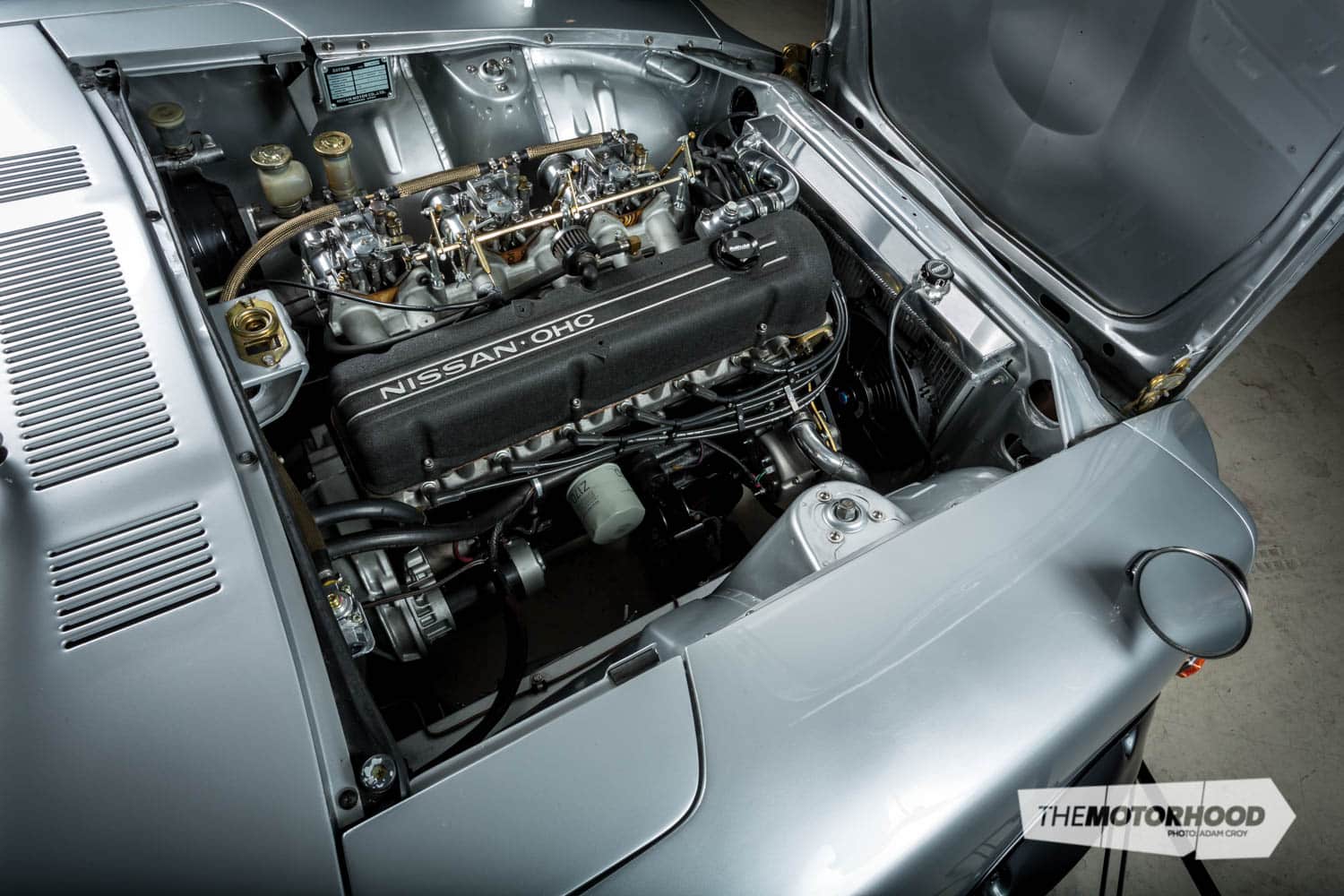
View fullsize
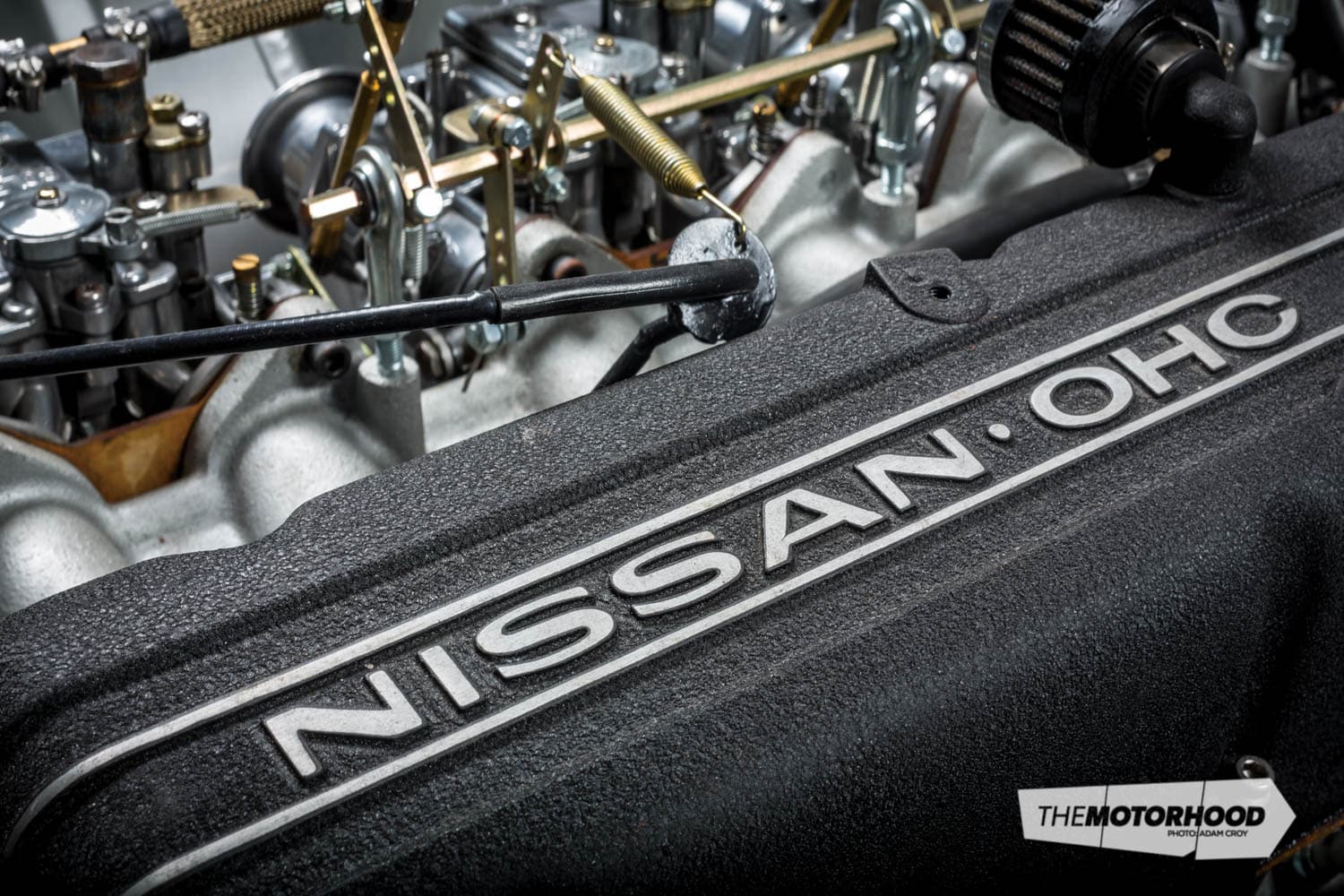
View fullsize
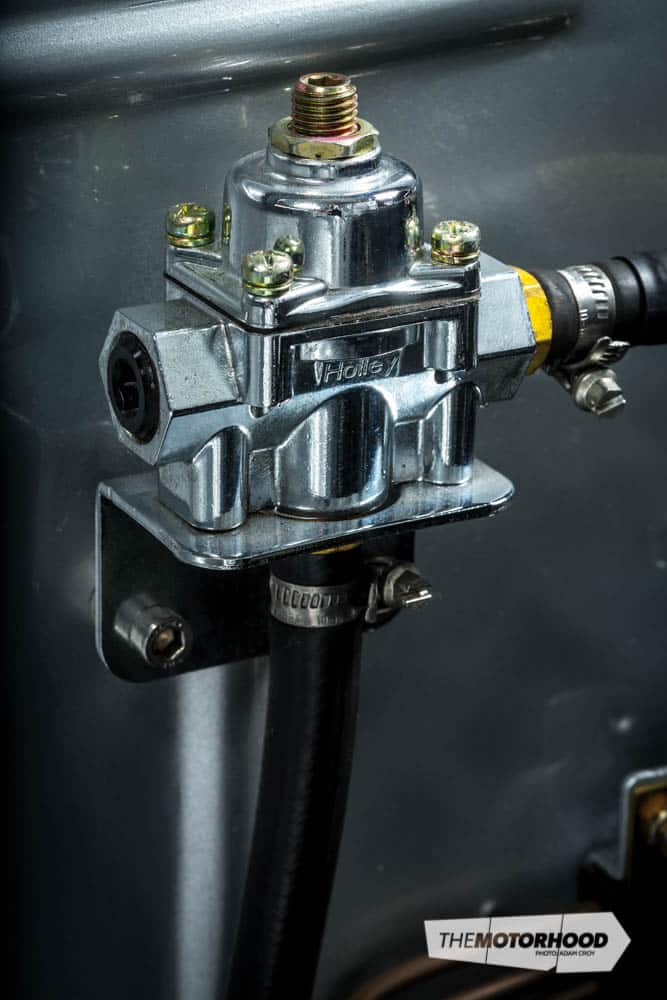
View fullsize
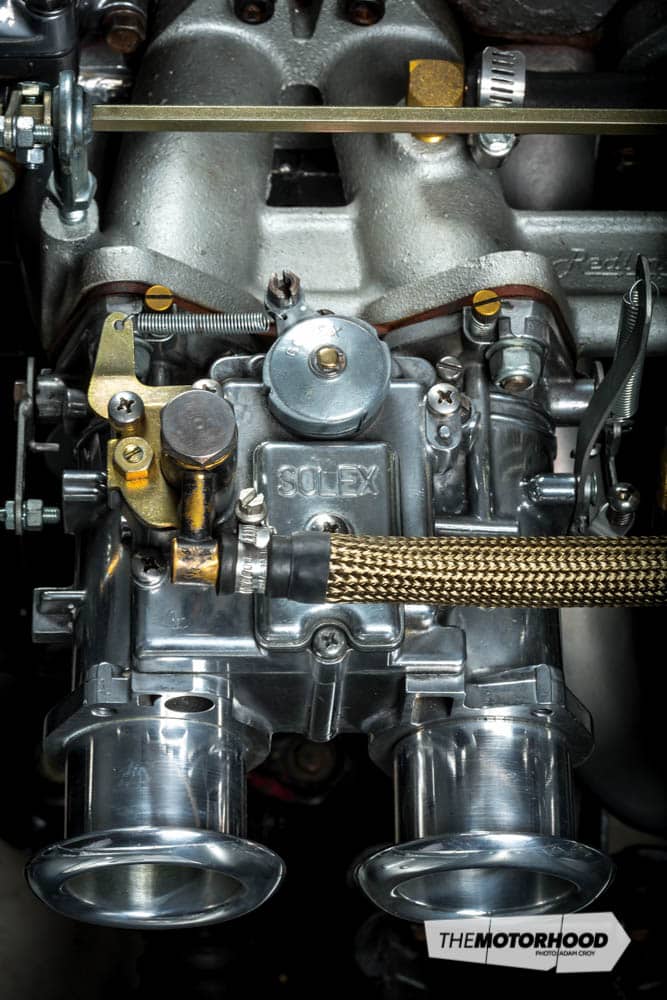
View fullsize
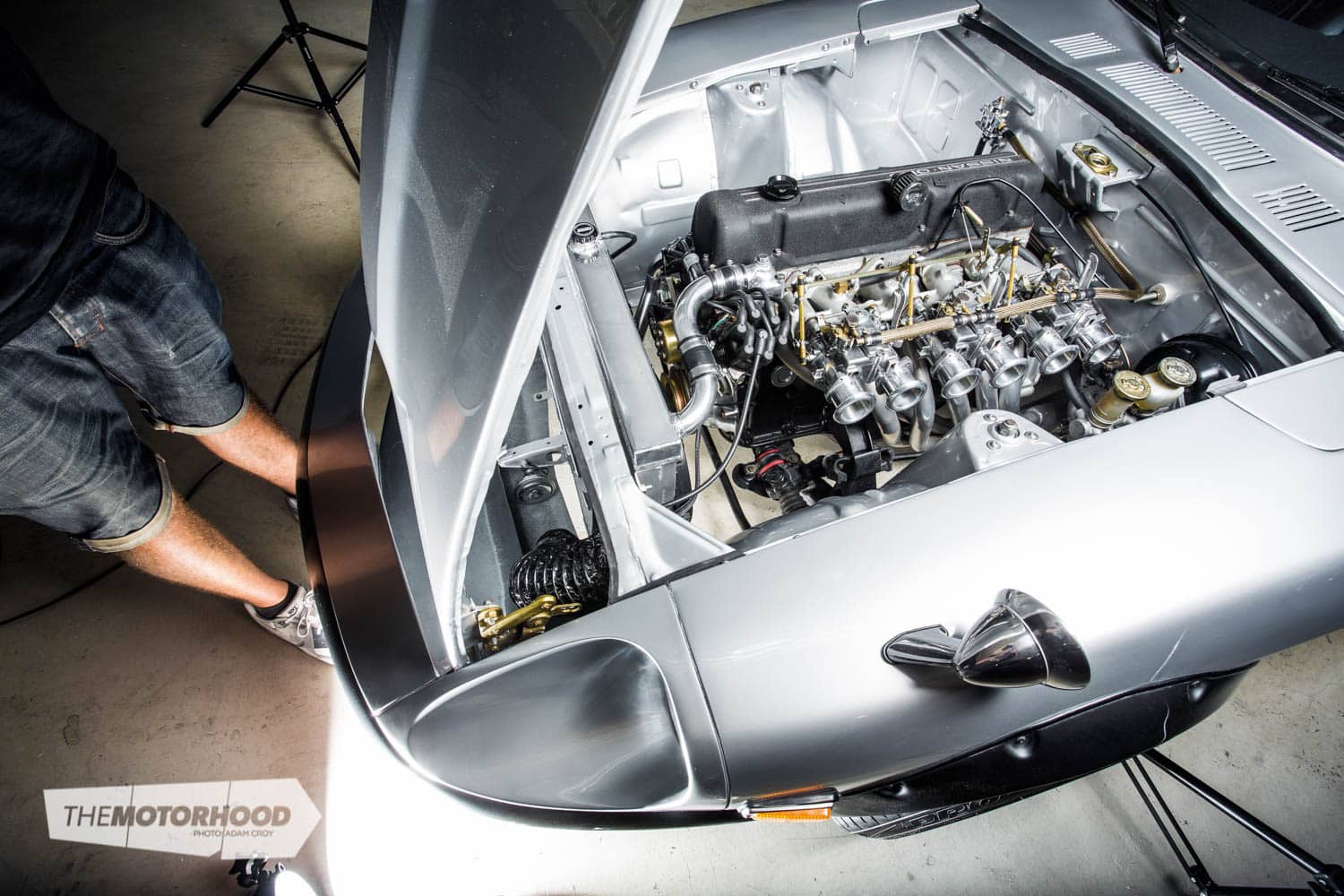
View fullsize
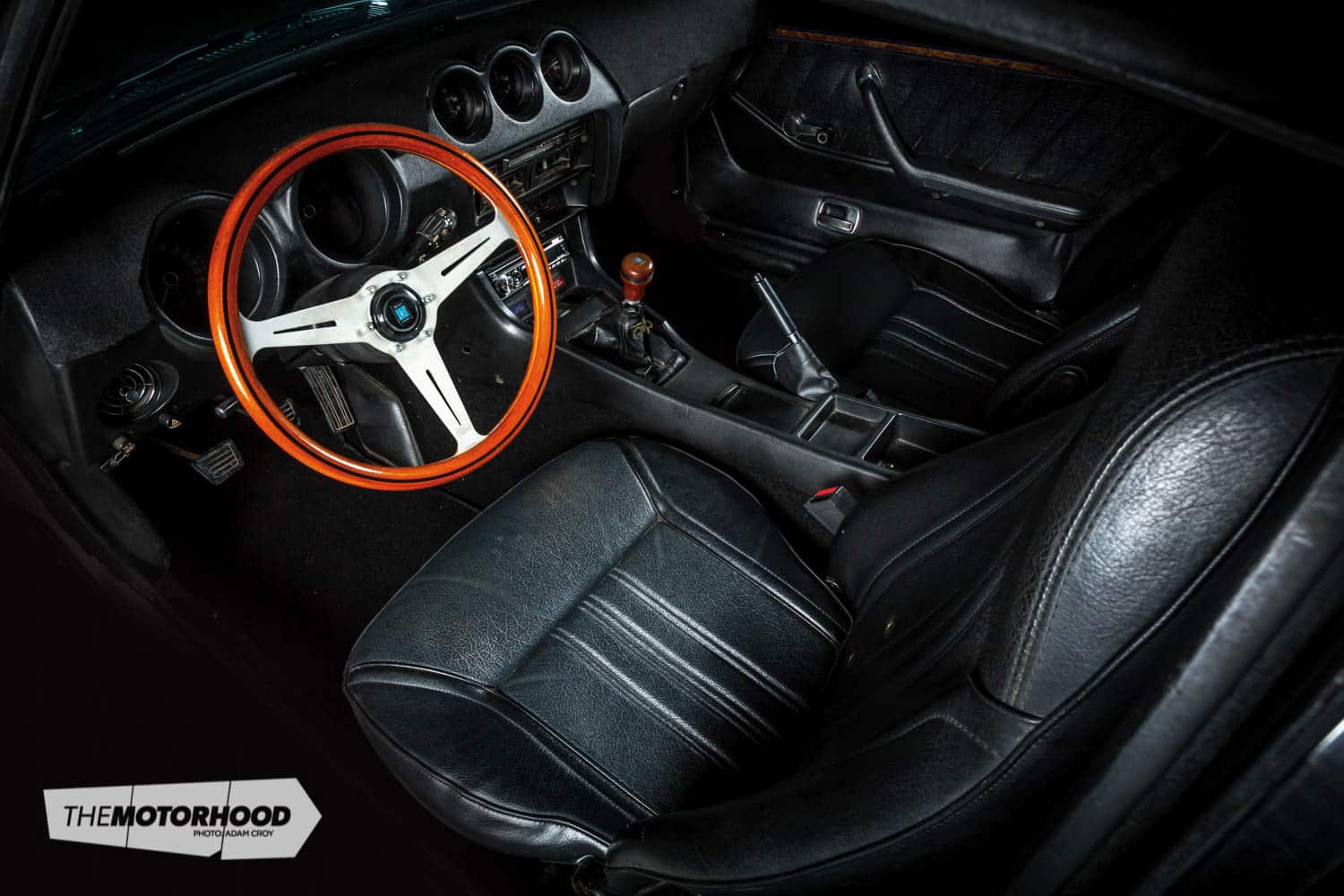
View fullsize
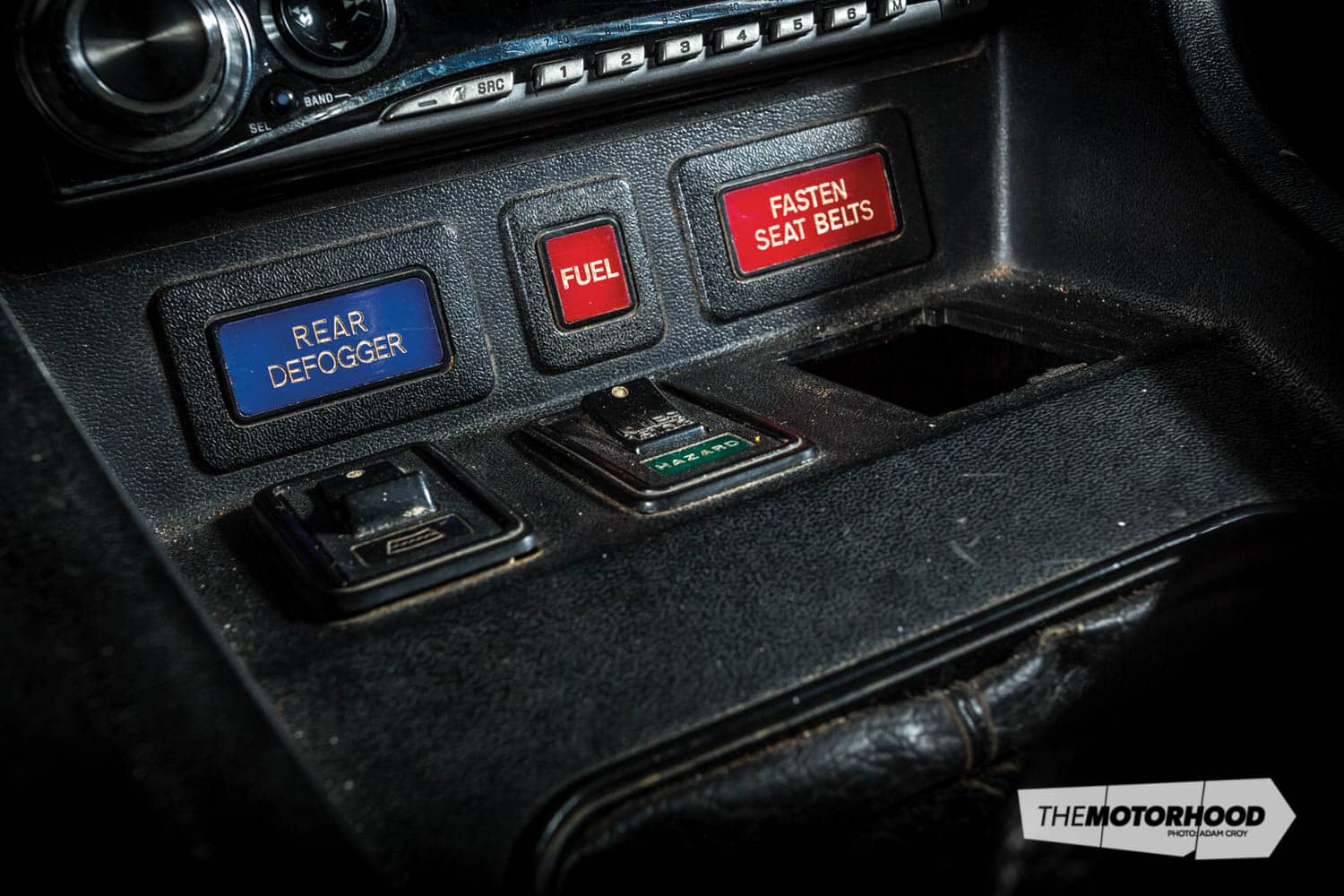
View fullsize
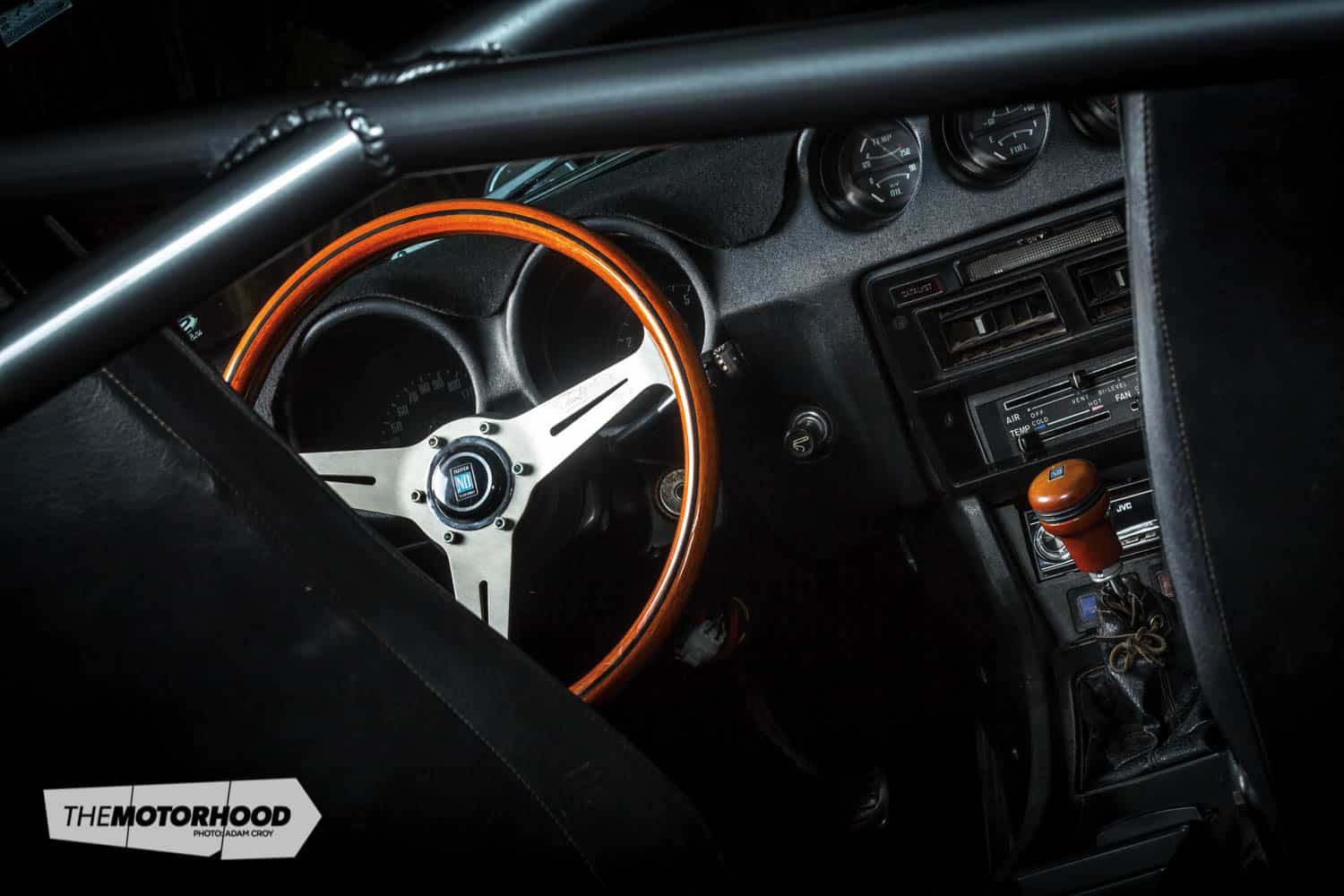
View fullsize
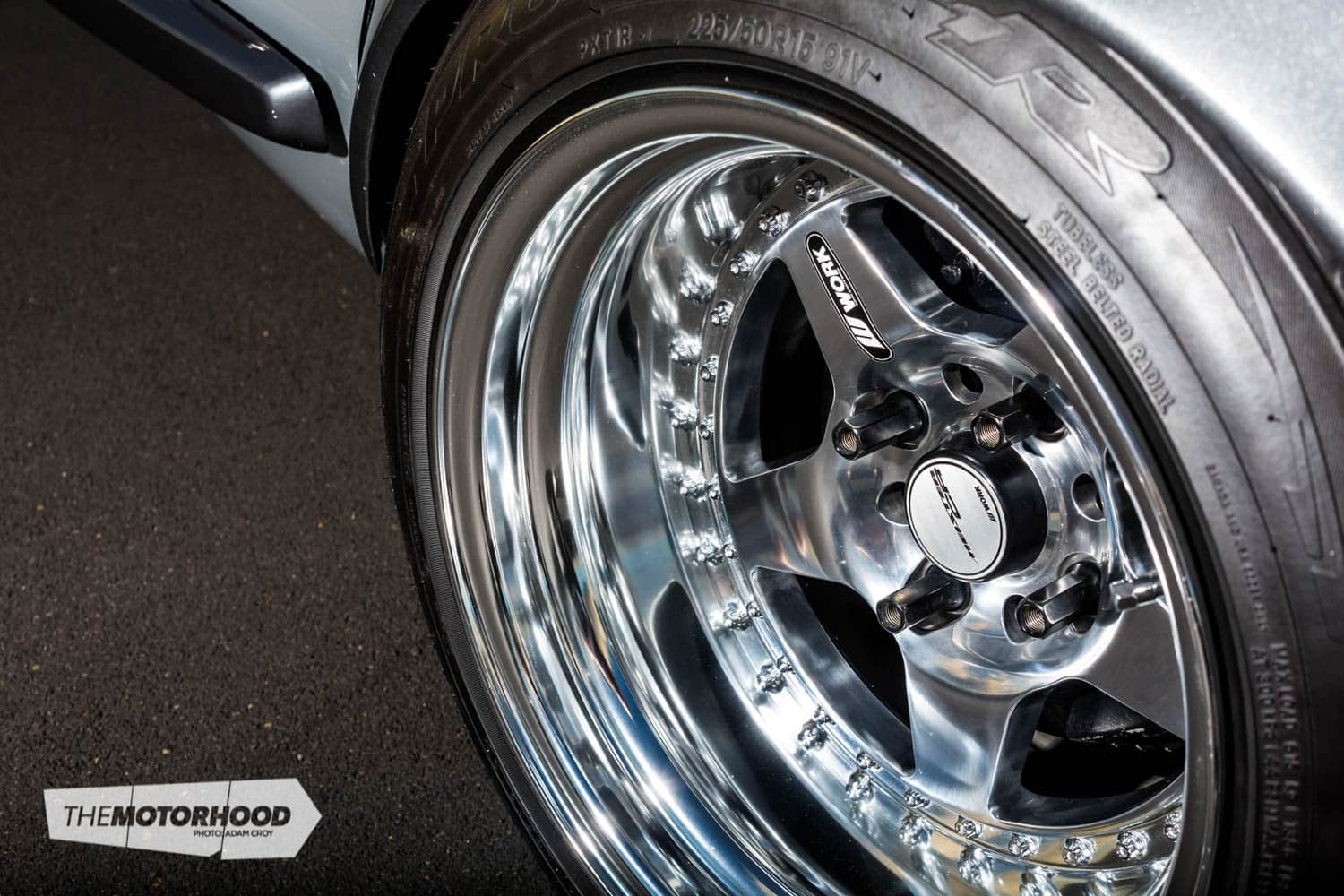
View fullsize
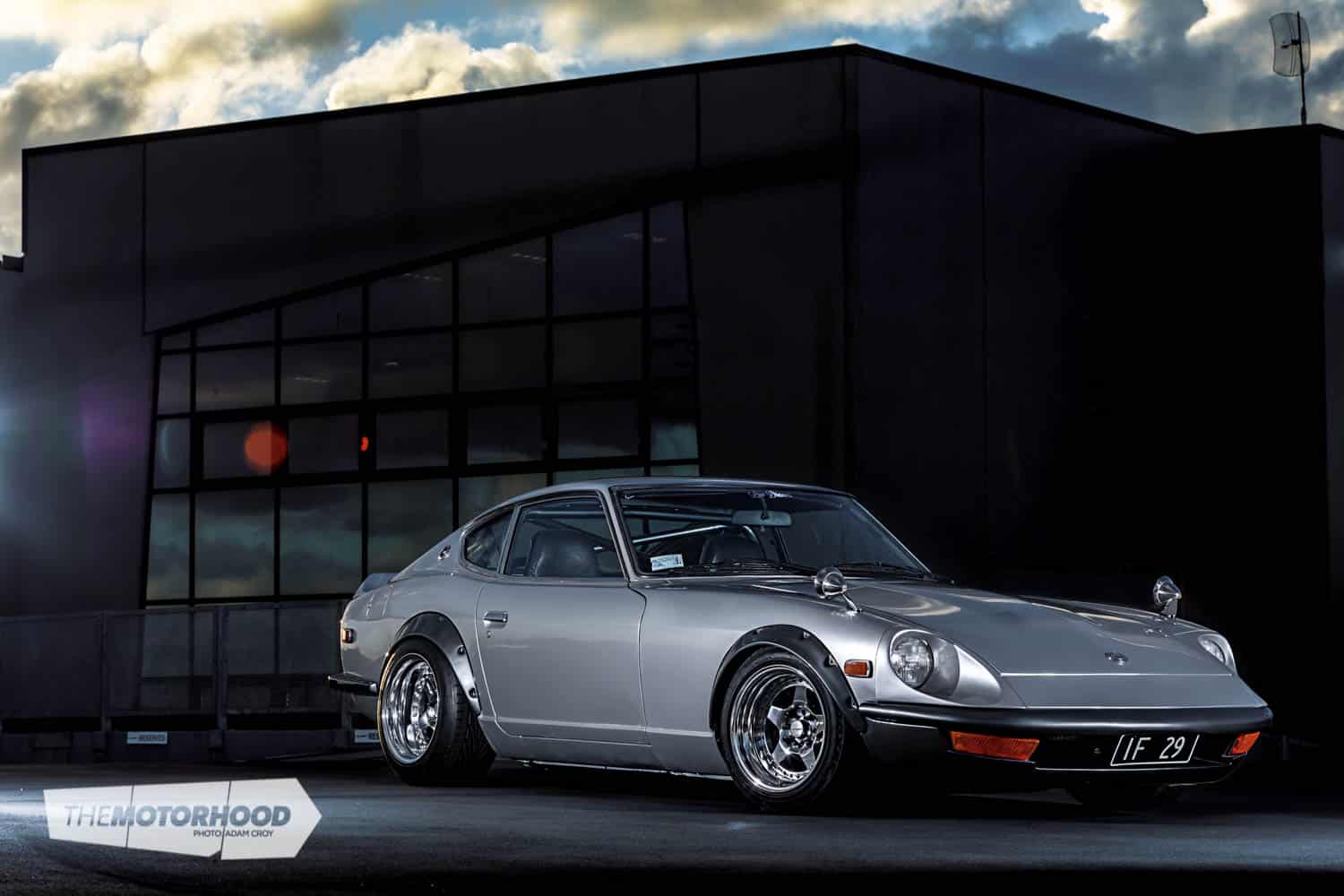
View fullsize
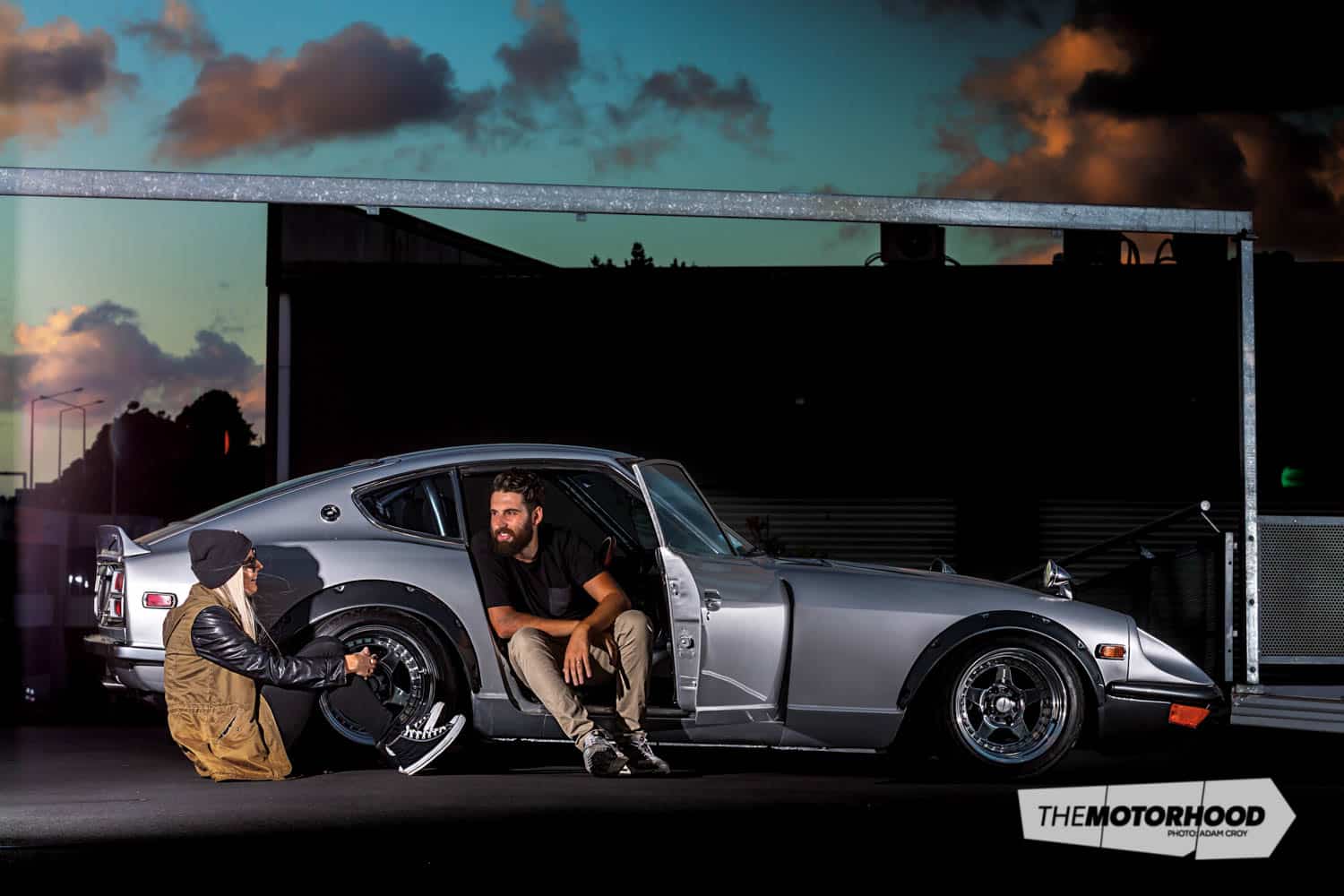
View fullsize
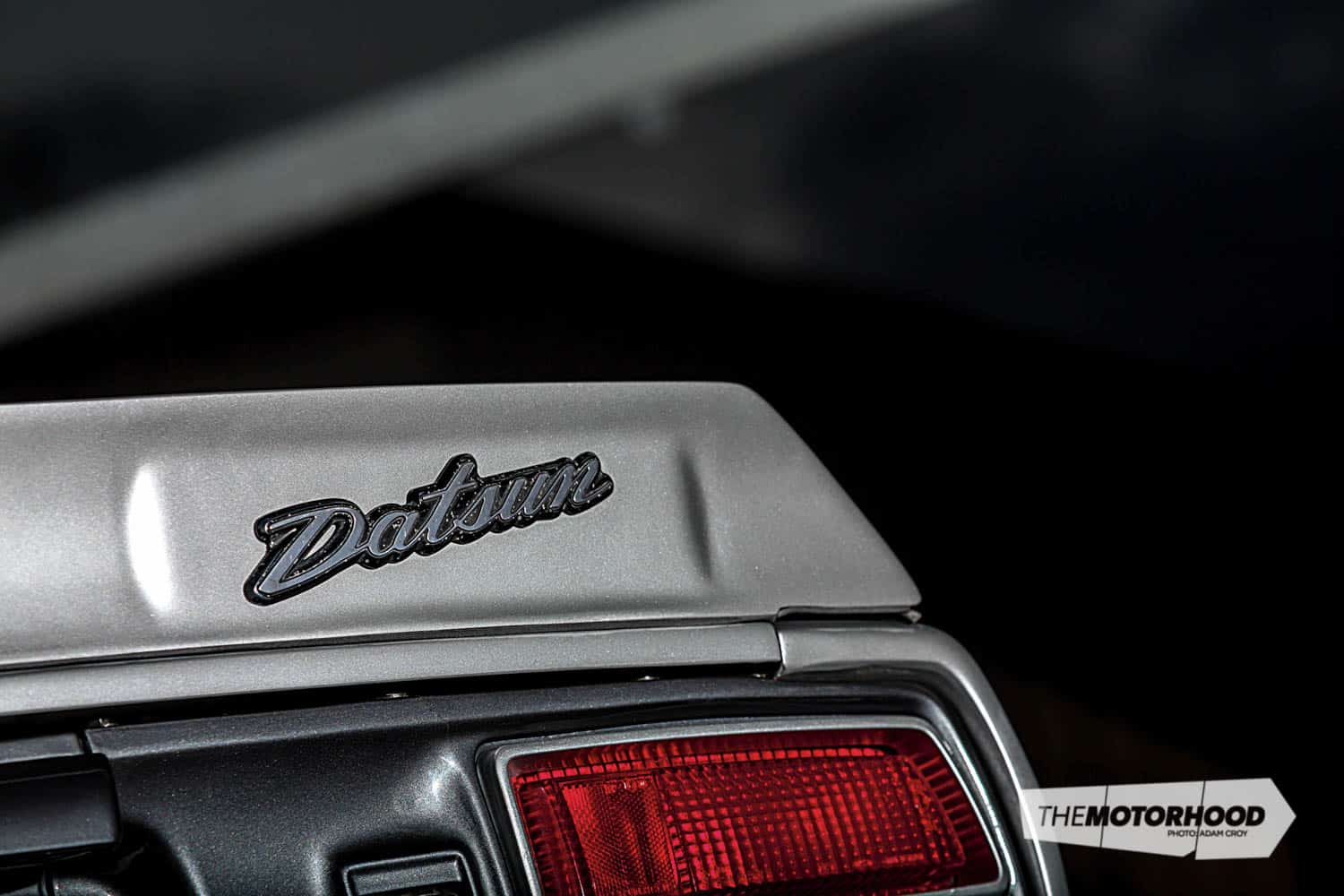
View fullsize
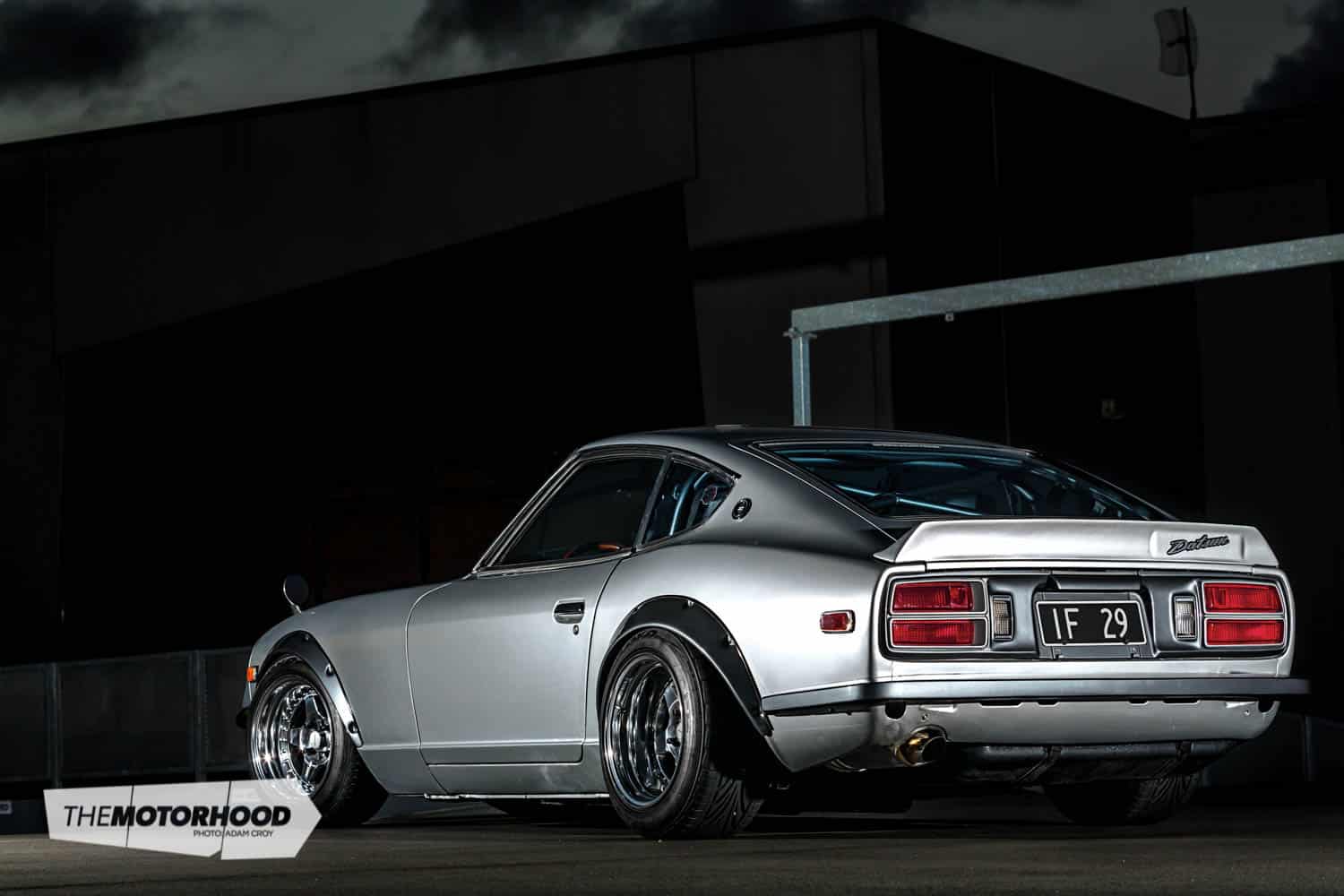
View fullsize
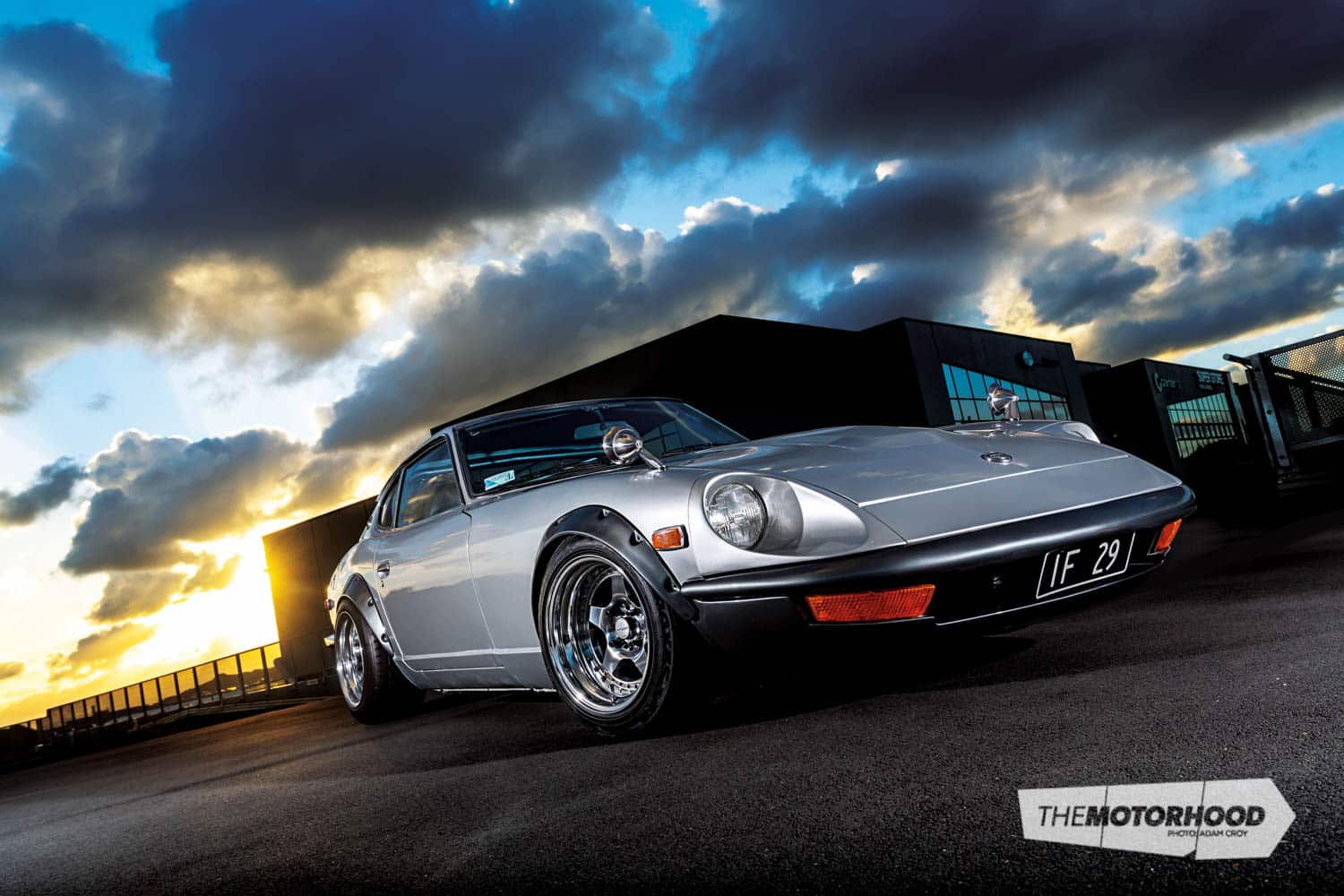
1975 Datsun 280Z (HLS30)
Engine
- Model: Nissan L28 2832cc straight six (10.1:1 compression ratio)
- Block: Refreshed N42 block, 87mm oversized balanced high-comp flat top pistons, factory balanced rods, balanced crankshaft, ARP main studs, ARP rod studs, high-flow and high-volume 280ZX turbo oil pump
- Head: Reshaped, ported and polished N42 head, Stage 3 street cam, ARP head studs
- Intake: Rebuilt and restored triple Mikuni/Solex R-Type 40mm carbs, custom bell-mouth trumpets, Pipercross filters, Redline Performance intake manifold, Redline Performance throttle linkage and cable arrangement
- Exhaust: Custom Chambers 42mm port-matched HPC-coated 6-2-1 headers, 2.5-inch system, Adrenalin R stainless torque chamber resonator, modified Adrenalin R stainless muffler, Kameari heavy-duty manifold gasket
- Fuel: Carter 40/70 electric fuel pump, Holley adjustable fuel-pressure regulator, -10 fuel line, Lava wrap fuel line heat shield
- Ignition: MSD Blaster 2 coil, rebuilt 280ZX distributor, 8mm leads, Rev-Rite rev limiter
- Cooling: Fenix alloy race radiator, twin 330mm electric fans, Nismo thermostat
- Extra: Completely shaved and deloomed engine bay, battery relocated to boot
Driveline
- Gearbox: 280ZX Turbo five-speed manual
- Clutch: Heavy-duty clutch plate
- Flywheel: 7.8kg lightened flywheel
- Diff: Factory Nissan R200
Support
- Struts: (F) Cosmo Racing adjustable coilover kit, sectioned 240Z strut tubes and lowers, KYB AW11 MR2 rear shocks, 8kg Cosmo Racing springs, S13 camber plates, (R) Cosmo Racing adjustable coilover kit, sectioned 240Z strut tubes and lowers, KYB 240Z front shocks, 6kg Cosmo Racing springs, shorter 280Z isolators
- Brakes: (F) Toyota Hilux twin-pot calipers and rotors, (R) rebuilt factory drums, resleeved master cylinder, Goodridge braided lines throughout
- Other: Custom rose-jointed rear control arms
Shoes
- Wheels: (F) 15×9-inch -16 Work Meister CR01, (R) 15×10-inch -28 Work Meister CR01
- Tyres: (F) 205/50R15 Toyo T1R, (R) 225/50R15 Toyo T1R
Interior
- Seats: Retrimmed factory
- Steering wheel: Nardi woodgrain
- Instrumentation: Factory instrument cluster, factory oil pressure, factory water temp, factory ammeter, very rare Nissan Rallye clock/lap timer
- Other: Four-point half cage, replacement carpet, JVC head unit, Sony Xplod 6x9s, completely rewired from headlights to tail lights
Performance
- Power: 134kW (180hp) at the rear wheels on HiTech Motorsport hub dyno
- Weight: 1150kg
Exterior
- Paint: Arctic silver/gunmetal two-tone
- Enhancements: 240ZG G-nose conversion, 240ZG fender flares, 240ZG boot wing, shaved, sectioned and shortened 240Z rear bumper, genuine ZG fender mirrors, side badges deleted, Halogen replacement headlights, custom bonnet hinges




